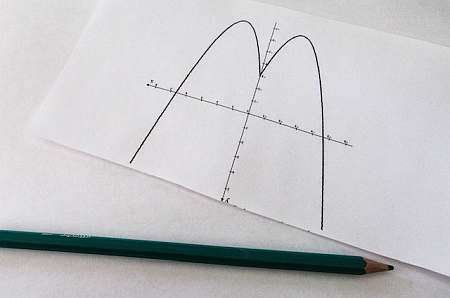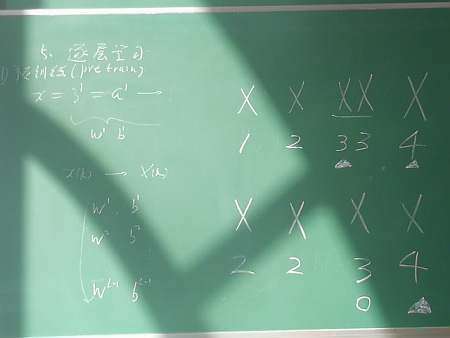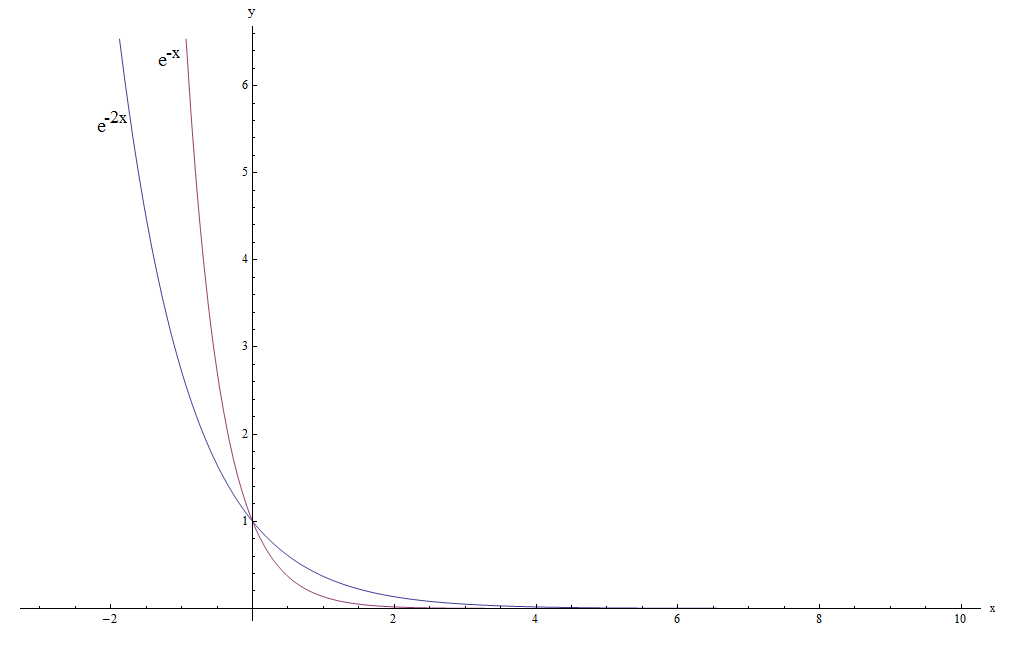Rational Zero Theorem Calculator
Instructions: Use this Rational Zero Theorem calculator to try to find rational roots for any polynomial equation you provide, showing all the steps. Please type a polynomial equation in the form box below.
More on th Rational Zero Theorem
Use this calculator to apply the Rational Zero Theorem to any valid polynomial equation you provide, showing all the steps. All you need to do is provide a valid polynomial equation, such as 4x^3 + 4x^2 + 12 = 0, or perhaps an equation that is not fully simplified like x^3 + 2x = 3x^2 - 2/3, as the calculator will take care of its simplification.
When you are done typing the polynomial equation for which you want to find rational roots, you will need to do is to click on "Calculate" and all the steps of the process will be provided for you. button, and you will be provided with all the steps of the calculations.
Observe that the Rational Zero Theorem allows you to test rationals that could be solutions, but they not necessarily roots. You are just testing potential candidates.
The Rational Zero Theorem is not a tool for finding ALL the roots of a polynomial equation. What is does is to claim that IF there is a rational root to these polynomial equation, then it must be among this proposed set of candidates, something like a 'short-list'.

How to use the Rational Zero Theorem?
The Rational Zero Theorem get a polynomial equation, and it puts all the terms on one side of the equation. We then find the integer divisors of the coefficient that multiplies the term with the highest power and we call them \(\{b_1, ...,, b_i\}\), and also find the integer divisors of the constant coefficient the term with the highest power and we call them \(\{a_1, ...,, a_j\}\)
Then, we find potential roots by using \(\pm\frac{a_k}{b_l}\) as the candidates, this is, they are constructed by taking the division of the corresponding integer divisors found before
What are the steps using the Rational Zero Theorem?
- Step 1: Identify the polynomial equation you want to work with, and simplify it if needed, so that it is in the form f(x) = a₀ + a₁x + ...+ anx^n+ c
- Step 2: Find all the integer (both positive and negative) divisors of a₀ and an
- Step 3: Then you need to compute every single divisor of a₀ and divide it by every single divisor of an. This is the list of your rational candidates
- Step 4: You need to go through each of the elements in the list of candidates above, and check whether they are roots of the given polynomial equation or not
Again, this is not necessarily find ALL the roots of the given polynomial equation. All if does is to find a list of candidate rational, which contains rational roots if there are rational roots. But there may not be any rational roots.
For the special case of a polynomial equation of order 2, you can use directly this quadratic equation solver, which will provide you will all the steps.
Find all possible rational zeros
So, what this calculator does is just that, find the list of all possible rational zeros, which is a great starting points to find roots, because then you use polynomial division to keep solving the equation.
Finding zeros of a polynomial function
Finding zeros of a polynomial function is a difficult task, especially for when the polynomial degree is large. In general, a polynomial of order n will have n roots, as stated by the Fundamental Theorem of Algebra, and those roots could be real, repeated real, or complex. That makes the search harder .
Attempting to find simple roots first (such as integer and rational roots) is the best possible strategy, as then if you find simple roots, you can use the factorization theorem to reduce the degree of the polynomial you are working with.
The rational zero test
Although you can get numeric roots to a polynomial equation using specialized software, using the rational zero test is a great exercise to attempt to find integer and rational solution first. It is a smart strategy, and gives you a list that will contain the rational roots of an equation if there is any.

Example: Rational Zero theorem application
Use the rational zero test to find rational roots of: \(3 x^4 + 3x^3 - x + 14 = 0\)
Solution:>The following polynomial equation has been provided:
\[\displaystyle 3 x^4 + 3x^3 - x + 14 = 0\]for which we need to use the Rational Zero Theorem, in order to find potential rational roots to the above equation.
The polynomial equation of order \(4\) has all the terms already on one side and it is already simplified, so no further simplification is needed.
Now, we need to find the integer numbers that divide the leading coefficient \(a_{4}\) and the constant coefficient \(a_0\), that will be used to construct our candidates to be zeroes of the polynomial equation.
▹ The dividers of \(a_{4} = 3\) are: \(\pm 1,\pm 3\).
▹ The dividers of \(a_0 = 14\) are: \(\pm 1,\pm 2,\pm 7,\pm 14\).
Therefore, dividing each divider of the constant coefficient \(a_0 = 14\) by each divider of the leading coefficient \(a_{4} = 3\), we find the following list of candidates to be roots:
\[\pm \frac{ 1}{ 1},\pm \frac{ 1}{ 3},\pm \frac{ 2}{ 1},\pm \frac{ 2}{ 3},\pm \frac{ 7}{ 1},\pm \frac{ 7}{ 3},\pm \frac{ 14}{ 1},\pm \frac{ 14}{ 3}\]Now, all the candidates need to be tested to see if they are a solution. The following is obtained from testing each candidates:
\[\begin{array}{ccccclcc} x & = & \displaystyle -1 &:& & \displaystyle 3\cdot\left(-1\right)^4+3\cdot\left(-1\right)^3-\left(-1\right)+14 & = & \displaystyle 15 \ne 0 \\\\ x & = & \displaystyle 1 &:& & \displaystyle 3\cdot\left(1\right)^4+3\cdot\left(1\right)^3-1+14 & = & \displaystyle 19 \ne 0 \\\\ x & = & \displaystyle -\frac{1}{3} &:& & \displaystyle 3\cdot\left(-\frac{1}{3}\right)^4+3\cdot\left(-\frac{1}{3}\right)^3+\frac{ 1}{ 3}+14 & = & \displaystyle \frac{385}{27} \ne 0 \\\\ x & = & \displaystyle \frac{1}{3} &:& & \displaystyle 3\cdot\frac{1}{3}^4+3\cdot\frac{1}{3}^3-\frac{1}{3}+14 & = & \displaystyle \frac{373}{27} \ne 0 \\\\ x & = & \displaystyle -2 &:& & \displaystyle 3\cdot\left(-2\right)^4+3\cdot\left(-2\right)^3-\left(-2\right)+14 & = & \displaystyle 40 \ne 0 \\\\ x & = & \displaystyle 2 &:& & \displaystyle 3\cdot\left(2\right)^4+3\cdot\left(2\right)^3-2+14 & = & \displaystyle 84 \ne 0 \\\\ x & = & \displaystyle -\frac{2}{3} &:& & \displaystyle 3\cdot\left(-\frac{2}{3}\right)^4+3\cdot\left(-\frac{2}{3}\right)^3+\frac{ 2}{ 3}+14 & = & \displaystyle \frac{388}{27} \ne 0 \\\\ x & = & \displaystyle \frac{2}{3} &:& & \displaystyle 3\cdot\frac{2}{3}^4+3\cdot\frac{2}{3}^3-\frac{2}{3}+14 & = & \displaystyle \frac{400}{27} \ne 0 \\\\ x & = & \displaystyle -7 &:& & \displaystyle 3\cdot\left(-7\right)^4+3\cdot\left(-7\right)^3-\left(-7\right)+14 & = & \displaystyle 6195 \ne 0 \\\\ x & = & \displaystyle 7 &:& & \displaystyle 3\cdot\left(7\right)^4+3\cdot\left(7\right)^3-7+14 & = & \displaystyle 8239 \ne 0 \\\\ x & = & \displaystyle -\frac{7}{3} &:& & \displaystyle 3\cdot\left(-\frac{7}{3}\right)^4+3\cdot\left(-\frac{7}{3}\right)^3+\frac{ 7}{ 3}+14 & = & \displaystyle \frac{1813}{27} \ne 0 \\\\ x & = & \displaystyle \frac{7}{3} &:& & \displaystyle 3\cdot\frac{7}{3}^4+3\cdot\frac{7}{3}^3-\frac{7}{3}+14 & = & \displaystyle \frac{3745}{27} \ne 0 \\\\ x & = & \displaystyle -14 &:& & \displaystyle 3\cdot\left(-14\right)^4+3\cdot\left(-14\right)^3-\left(-14\right)+14 & = & \displaystyle 107044 \ne 0 \\\\ x & = & \displaystyle 14 &:& & \displaystyle 3\cdot\left(14\right)^4+3\cdot\left(14\right)^3-14+14 & = & \displaystyle 123480 \ne 0 \\\\ x & = & \displaystyle -\frac{14}{3} &:& & \displaystyle 3\cdot\left(-\frac{14}{3}\right)^4+3\cdot\left(-\frac{14}{3}\right)^3+\frac{ 14}{ 3}+14 & = & \displaystyle \frac{30688}{27} \ne 0 \\\\ x & = & \displaystyle \frac{14}{3} &:& & \displaystyle 3\cdot\frac{14}{3}^4+3\cdot\frac{14}{3}^3-\frac{14}{3}+14 & = & \displaystyle \frac{46900}{27} \ne 0 \\\\ \end{array}\]Conclusion: So then, none of the candidates is a root, and therefore, this method does not allow us to find any rational solutions in this case.
Example: Rational Zero theorem application
Does the equation : \(x^{10} - 4 = 0\) have any rational roots?
Solution: We need to try yo find rational roots for:
\[\displaystyle x^{10}-4=0\]by using the Rational Zeros Theorem.
There is no need for further simplification because the polynomial equation of order 10 already has all the terms on one side.
We must now identify the integers that divide the leading coefficient \(a_{10}\) and the constant coefficient \(a_0\), on the basis of which we will create our candidates for the polynomial equation's zeros.
The dividers of \(a_{10} = 1\) are: \(\pm 1\).
The dividers of \(a_0 = -4\) are: \(\pm 1,\pm 2,\pm 4\).
Therefore, dividing each divider of the constant coefficient \(a_0 = -4\) by each divider of the leading coefficient \(a_{10} = 1\), we find the following list of candidates to be roots:
\[\pm \frac{ 1}{ 1},\pm \frac{ 2}{ 1},\pm \frac{ 4}{ 1}\]Now, all the candidates need to be tested to see if they are a solution. The following is obtained from testing each candidates:
\[\begin{array}{ccccclcc} x & = & \displaystyle -1 &:& & \displaystyle \left(-1\right)^{10}-4 & = & \displaystyle -3 \ne 0 \\\\ x & = & \displaystyle 1 &:& & \displaystyle 1^{10}-4 & = & \displaystyle -3 \ne 0 \\\\ x & = & \displaystyle -2 &:& & \displaystyle \left(-2\right)^{10}-4 & = & \displaystyle 1020 \ne 0 \\\\ x & = & \displaystyle 2 &:& & \displaystyle 2^{10}-4 & = & \displaystyle 1020 \ne 0 \\\\ x & = & \displaystyle -4 &:& & \displaystyle \left(-4\right)^{10}-4 & = & \displaystyle 1048572 \ne 0 \\\\ x & = & \displaystyle 4 &:& & \displaystyle 4^{10}-4 & = & \displaystyle 1048572 \ne 0 \\\\ \end{array}\]Conclusion: So then, none of the candidates is a root, and therefore, the original polynomial equation does not have rational roots.
Example: Rational Zero theorem application
Use the rational zero test to find rational roots of: \( x^3-\frac{8}{3}x^2+\frac{19}{9}x-\frac{4}{9}=0\)
Solution:Now we need to work with:
\[\displaystyle x^3-\frac{8}{3}x^2+\frac{19}{9}x-\frac{4}{9}=0\]We need to find the integer numbers that divide the leading coefficient \(a_{3}\) and the constant coefficient \(a_0\).
Note: In this case, we observe that in order to have both constant and leading coefficient we need to amplify both sides of the equation by \(9\). The equivalent equation is:
\[9x^3-24x^2+19x-4 = 0\]▹ The dividers of \(a_{3} = 9\) are: \(\pm 1,\pm 3,\pm 9\).
▹ The dividers of \(a_0 = -4\) are: \(\pm 1,\pm 2,\pm 4\).
Therefore, dividing each divider of the constant coefficient \(a_0 = -4\) by each divider of the leading coefficient \(a_{3} = 9\), we find the following list of candidates to be roots:
\[\pm \frac{ 1}{ 1},\pm \frac{ 1}{ 3},\pm \frac{ 1}{ 9},\pm \frac{ 2}{ 1},\pm \frac{ 2}{ 3},\pm \frac{ 2}{ 9},\pm \frac{ 4}{ 1},\pm \frac{ 4}{ 3},\pm \frac{ 4}{ 9}\]All of the candidates must now be tested to determine if they are a solution. The following results are obtained after testing each one:
\[\begin{array}{ccccclcc} x & = & \displaystyle -1 &:& & \displaystyle 9\cdot\left(-1\right)^3-24\cdot\left(-1\right)^2+19\cdot\left(-1\right)-4 & = & \displaystyle -56 \ne 0 \\\\ x & = & \displaystyle 1 &:& & \displaystyle 9\cdot\left(1\right)^3-24\cdot\left(1\right)^2+19\cdot\left(1\right)-4 & = & \displaystyle 0 \\\\ x & = & \displaystyle -\frac{1}{3} &:& & \displaystyle 9\cdot\left(-\frac{1}{3}\right)^3-24\cdot\left(-\frac{1}{3}\right)^2+19\cdot\left(-\frac{1}{3}\right)-4 & = & \displaystyle -\frac{40}{3} \ne 0 \\\\ x & = & \displaystyle \frac{1}{3} &:& & \displaystyle 9\cdot\frac{1}{3}^3-24\cdot\frac{1}{3}^2+19\cdot\frac{1}{3}-4 & = & \displaystyle 0 \\\\ x & = & \displaystyle -\frac{1}{9} &:& & \displaystyle 9\cdot\left(-\frac{1}{9}\right)^3-24\cdot\left(-\frac{1}{9}\right)^2+19\cdot\left(-\frac{1}{9}\right)-4 & = & \displaystyle -\frac{520}{81} \ne 0 \\\\ x & = & \displaystyle \frac{1}{9} &:& & \displaystyle 9\cdot\frac{1}{9}^3-24\cdot\frac{1}{9}^2+19\cdot\frac{1}{9}-4 & = & \displaystyle -\frac{176}{81} \ne 0 \\\\ x & = & \displaystyle -2 &:& & \displaystyle 9\cdot\left(-2\right)^3-24\cdot\left(-2\right)^2+19\cdot\left(-2\right)-4 & = & \displaystyle -210 \ne 0 \\\\ x & = & \displaystyle 2 &:& & \displaystyle 9\cdot\left(2\right)^3-24\cdot\left(2\right)^2+19\cdot\left(2\right)-4 & = & \displaystyle 10 \ne 0 \\\\ x & = & \displaystyle -\frac{2}{3} &:& & \displaystyle 9\cdot\left(-\frac{2}{3}\right)^3-24\cdot\left(-\frac{2}{3}\right)^2+19\cdot\left(-\frac{2}{3}\right)-4 & = & \displaystyle -30 \ne 0 \\\\ x & = & \displaystyle \frac{2}{3} &:& & \displaystyle 9\cdot\frac{2}{3}^3-24\cdot\frac{2}{3}^2+19\cdot\frac{2}{3}-4 & = & \displaystyle \frac{2}{3} \ne 0 \\\\ x & = & \displaystyle -\frac{2}{9} &:& & \displaystyle 9\cdot\left(-\frac{2}{9}\right)^3-24\cdot\left(-\frac{2}{9}\right)^2+19\cdot\left(-\frac{2}{9}\right)-4 & = & \displaystyle -\frac{770}{81} \ne 0 \\\\ x & = & \displaystyle \frac{2}{9} &:& & \displaystyle 9\cdot\frac{2}{9}^3-24\cdot\frac{2}{9}^2+19\cdot\frac{2}{9}-4 & = & \displaystyle -\frac{70}{81} \ne 0 \\\\ x & = & \displaystyle -4 &:& & \displaystyle 9\cdot\left(-4\right)^3-24\cdot\left(-4\right)^2+19\cdot\left(-4\right)-4 & = & \displaystyle -1040 \ne 0 \\\\ x & = & \displaystyle 4 &:& & \displaystyle 9\cdot\left(4\right)^3-24\cdot\left(4\right)^2+19\cdot\left(4\right)-4 & = & \displaystyle 264 \ne 0 \\\\ x & = & \displaystyle -\frac{4}{3} &:& & \displaystyle 9\cdot\left(-\frac{4}{3}\right)^3-24\cdot\left(-\frac{4}{3}\right)^2+19\cdot\left(-\frac{4}{3}\right)-4 & = & \displaystyle -\frac{280}{3} \ne 0 \\\\ x & = & \displaystyle \frac{4}{3} &:& & \displaystyle 9\cdot\frac{4}{3}^3-24\cdot\frac{4}{3}^2+19\cdot\frac{4}{3}-4 & = & \displaystyle 0 \\\\ x & = & \displaystyle -\frac{4}{9} &:& & \displaystyle 9\cdot\left(-\frac{4}{9}\right)^3-24\cdot\left(-\frac{4}{9}\right)^2+19\cdot\left(-\frac{4}{9}\right)-4 & = & \displaystyle -\frac{1456}{81} \ne 0 \\\\ x & = & \displaystyle \frac{4}{9} &:& & \displaystyle 9\cdot\frac{4}{9}^3-24\cdot\frac{4}{9}^2+19\cdot\frac{4}{9}-4 & = & \displaystyle \frac{40}{81} \ne 0 \\\\ \end{array}\]Conclusion: So in this case, out of the proposed candidates, we find the rational roots \(\displaystyle x = 1 \),\(\displaystyle x = \frac{1}{3} \) and \(\displaystyle x = \frac{4}{3} \) and then, the term \( \displaystyle \left(x-1\right)\left(x-\frac{1}{3}\right)\left(x-\frac{4}{3}\right)\) divides the polynomial expression \(\displaystyle x^3-\frac{8}{3}x^2+\frac{19}{9}x-\frac{4}{9}\).
More algebra calculators
Working with polynomials is a crucial skill that you can greatly benefit from. Lots of applications in Algebra use it, especially with quadratic equation applications.
The most simple case of a polynomial equation is a linear equation, that has a myriad of applications.


